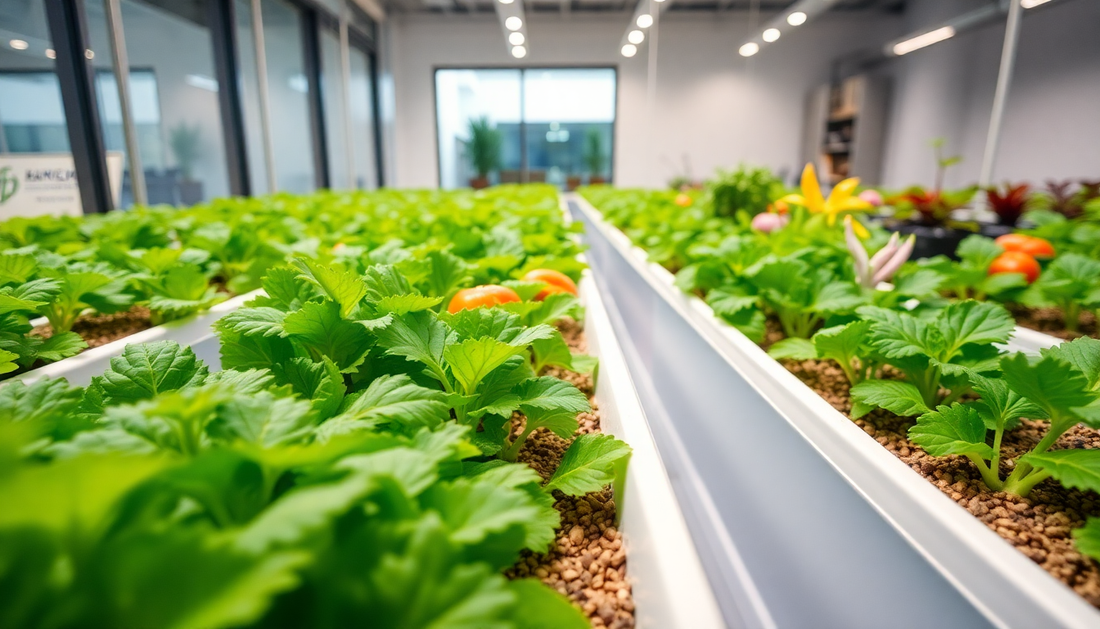
The Best Potting Mix for Hydroponic Gardening
In the world of urban farming and sustainable living, hydroponic gardening has emerged as a game-changer. By growing plants without soil, hydroponics offers a space-efficient, water-conscious, and highly productive method of cultivating a wide range of crops. However, the success of a hydroponic system largely depends on the quality of the potting mix used. In this comprehensive guide, we'll explore the essential characteristics of the best potting mix for hydroponic gardening, helping you create a thriving indoor oasis.
Understanding the Role of Potting Mix in Hydroponics
Hydroponic gardening relies on a nutrient-rich, water-based solution to provide plants with the essential nutrients they need to thrive. Unlike traditional soil-based gardening, the potting mix in a hydroponic system serves a different purpose. Instead of being the primary source of nutrients, the potting mix acts as a support structure, anchoring the plant's roots and providing a stable, well-aerated environment.
The ideal potting mix for hydroponics should be lightweight, highly porous, and capable of retaining moisture while allowing for proper drainage. These characteristics ensure that the plant's roots have access to the necessary oxygen, water, and nutrients, enabling optimal growth and productivity.
Choosing the Right Potting Mix Ingredients
When selecting the best potting mix for your hydroponic garden, it's crucial to consider the specific blend of ingredients that will meet the unique needs of your plants. Here are some of the key components to look for:
Coco Coir
Coco coir, derived from the fibrous husks of coconuts, is a popular choice for hydroponic potting mixes. Coco coir is highly absorbent, retaining moisture while allowing for excellent drainage and aeration. It also helps to maintain a neutral pH, which is essential for healthy plant growth.
Perlite
Perlite is a lightweight, volcanic mineral that is widely used in hydroponic potting mixes. It helps to improve soil aeration, prevent compaction, and enhance water drainage. Perlite's porous structure also allows for efficient oxygen circulation around the plant's roots.
Vermiculite
Vermiculite is another mineral-based component that is commonly found in hydroponic potting mixes. It has a high water-holding capacity, which helps to maintain consistent moisture levels in the growing medium. Vermiculite also contributes to the overall porosity and structure of the mix.
Sphagnum Peat Moss
Sphagnum peat moss is a natural, organic material that is often included in hydroponic potting mixes. It helps to retain moisture, improve soil structure, and provide a slightly acidic pH, which can be beneficial for certain plant species.
Slow-Release Fertilizers
While the nutrient-rich water solution is the primary source of nutrients in a hydroponic system, some potting mixes may also contain slow-release fertilizers. These fertilizers gradually release essential nutrients over time, ensuring a steady supply for your plants.
Blending the Perfect Potting Mix
When creating the ideal potting mix for your hydroponic garden, it's essential to strike the right balance between the various ingredients. A typical hydroponic potting mix might consist of the following proportions:
- 40-50% Coco coir
- 20-30% Perlite
- 10-20% Vermiculite
- 10-20% Sphagnum peat moss
- 2-5% Slow-release fertilizers
The exact ratios may vary depending on the specific needs of your plants and the type of hydroponic system you are using. It's always a good idea to consult with experienced hydroponic gardeners or refer to reputable sources to determine the optimal blend for your setup.
Maintaining the Potting Mix
Proper maintenance of your hydroponic potting mix is crucial for ensuring the long-term health and productivity of your plants. Here are some tips to keep your mix in top condition:
Monitoring pH Levels
Regularly testing the pH of your potting mix and adjusting it as needed is essential. Most plants thrive in a slightly acidic to neutral pH range, typically between 5.5 and 6.5. You can use pH testing kits or meters to monitor the levels and make any necessary adjustments.
Replenishing Nutrients
As plants consume the nutrients in the water-based solution, it's important to replenish them regularly. This can be done by adding a balanced, water-soluble fertilizer to the system or by replacing the nutrient solution entirely.
Preventing Compaction
Over time, the potting mix may become compacted, reducing aeration and drainage. To prevent this, you can gently stir or aerate the mix, or consider replacing it entirely if it has become too dense.
Addressing Pests and Diseases
Regularly inspecting your hydroponic system for signs of pests or diseases is crucial. If any issues arise, take prompt action to address them, as they can quickly spread and compromise the health of your plants.
By carefully selecting the right potting mix ingredients, blending them in the optimal proportions, and maintaining the mix's health, you can create a thriving hydroponic garden that produces an abundance of fresh, nutrient-rich produce. With the right potting mix, your indoor oasis will flourish, bringing the joy of urban farming right to your doorstep.
Conclusion
Hydroponic gardening offers a sustainable and space-efficient solution for growing a wide variety of plants, from leafy greens to fruiting crops. The key to a successful hydroponic system lies in the quality of the potting mix used. By understanding the essential characteristics of the best potting mix for hydroponics and following the guidelines outlined in this comprehensive guide, you can create a thriving indoor garden that will provide you with a bountiful harvest year-round.
Remember, the journey of hydroponic gardening is an ongoing learning experience, and it's important to stay informed, experiment, and adapt your techniques to the unique needs of your plants and growing environment. With the right potting mix and a commitment to continuous improvement, you can unlock the full potential of hydroponic gardening and enjoy the countless benefits it has to offer.
So, whether you're a seasoned urban farmer or just starting your journey into the world of indoor gardening, let this guide be your roadmap to cultivating the perfect potting mix for your hydroponic oasis. Happy growing!







No comments